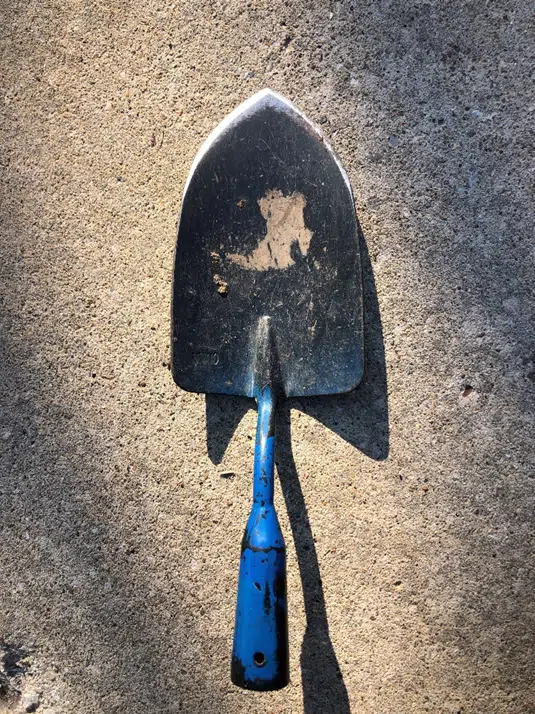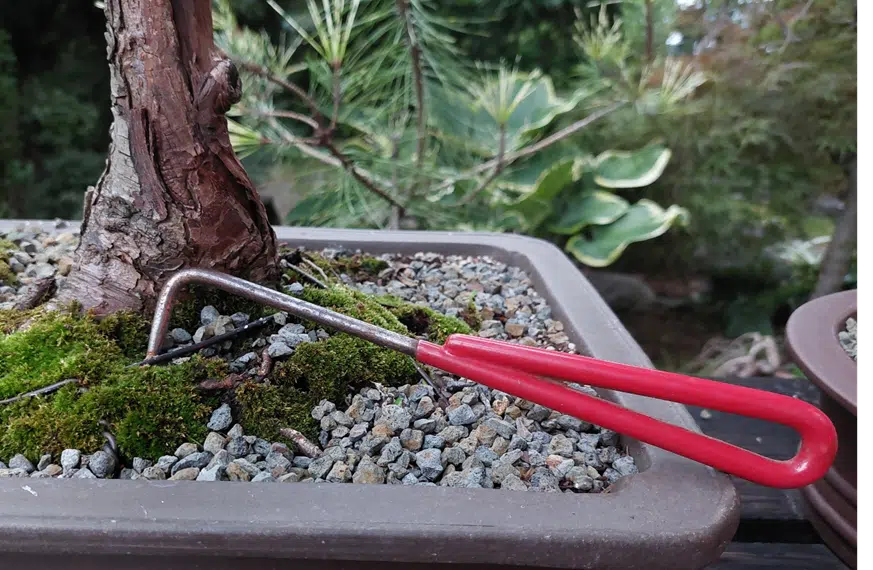
Installment II
Disclaimer: Any brand names mentioned or pictured in this article are not an endorsement. They are the preferences of individual garden and tree care professionals.
Welcome to the 2nd installment of, “Top Choice Tools of the Pros.”. The first, was posted on Sept.12, 2022. This time I’d like to explore some simple yet impactful tools as well as compare similar tools.
Rob Dzurec, Horticulturist at our Cleveland Botanical Garden campus appreciates using this Japanese Hand Hoe (below left) also called a Cape Cod Weeder. It is quite sharp and great for undercutting patches of weeds. Rob said, “There is a certain catharsis when using this on weeds which makes the chore almost enjoyable.” Pictured to the right of Rob’s hand hoe is my volunteers’ very similar tool. They said they’ve used it so much it’s bent, but far from broken, still going strong!

There’s a beauty and simplicity of certain tools. This past fall, Arboretum horticulture team members traveled to CBG to help plant bulbs. While there, I came across this hand trowel. A shared tool among the CBG horticulture staff. With its wide blade, this seasoned, little gem is favored for planting bulbs or digging up annuals in the fall. The remnants of bright blue paint give charm, beauty, and a sense of history to this tool.

At the Arboretum many of us find the Scuffle Hoe, aka Hoop Hoe (below left) to be invaluable for weeding large areas covered with low-growing, unwelcome plants such as hairy bittercress, ground ivy, spurge, or crabgrass. It is also great for maintaining bed edges. A similar tool is the Dutch Push-Pull Hoe (below right). I came across this tool while watching Roy Diblik’s YouTube channel. Roy is a famous perennial gardener and owner of North Wind Perennial Farm in Wisconsin. The Dutch Hoe is longer in length than the scuffle hoe, measuring 54”. Roy likes it because it allows you to stand up straight and weed large areas rather quickly and “joyfully”. Check out his channel to see him demonstrate!

The Soil Knife vs. the Hori-Hori… The jagged serration of the Soil Knife (below left) is very sharp and the twine cutting notch at the base of the blade is a practical feature. However, the Hori-Hori (below right) is more sustainable having no plastic parts. Its blade is mounted into the handle and held with screws, creating a sturdy construction. When you remove that nursery pot and find a hard ball of girdling roots, either of these tools can be used to aggressively tickle or slice, freeing the roots so they can perform their functions once placed into the soil. Both tools also have a small hole in the handle so you can attach a carabiner or length of chord making it possible to hang while storing.

For those of you interested in bonsai or delicate house plant gardening, MaryAnn Thesing, THA Horticulturist, and bonsai enthusiast, suggests this Japanese Root Hook (below). The single tine makes it ideal for teasing roots without tearing, which is essential when navigating a pot bound plant or exposing the diminutive root flare of a bonsai tree. Again, a simple tool that can make all the difference with detailed work.

There are many wonderful tools for gardening. Sometimes they’re simple but make the work so much more efficient and enjoyable. Often there are multiple tools that work for the same task and it’s the gardener’s preference which one is best to use. Hopefully this profile of tools will entice you to try something new, revisit an old tool or simply gain some gift ideas for a gardening loved one.

Mary Lineberger
Gardener
Mary Lineberger is a Gardener in the Helen S. Layer Rhododendron Garden. Previously she was Garden Manager at The Cleveland Museum of Natural History as well as a seasonal hire at Holden in 2015 and 2016. She is pictured here with Norman, who before joining Mary’s family, was a scrawny stray wandering the woods surrounding Holden Arboretum.












